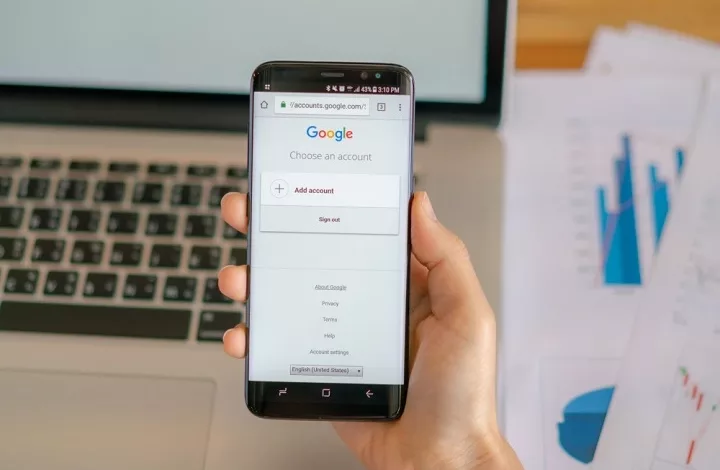Understanding Google Business Profile’s Strict Requirements: Why Accuracy Matters?

Today we’re diving into a tool that’s become the cornerstone of local business marketing: Google My Business (or Google Business Profile as it has recently been renamed).
This powerhouse platform does more than just put your business on the map; it’s the digital megaphone that amplifies your local presence, directly connecting you with customers. An absolute must for any local business.
But here’s the catch – Google has upped the ante with stricter verification and accuracy requirements for GBP listings. In a digital age where information travels faster than light, accuracy is the golden ticket.
Google isn’t just being meticulous for the sake of it; they’re setting the stage for a more trustworthy, reliable, and user-friendly experience.
And let’s be honest, in a world where your digital footprint is as significant as your physical one, this is a game-changer.
Let’s go through some of these tightened requirements and how you can make sure you hit the mark.
It’s not just about getting on the map anymore; it’s about crafting a digital identity that’s as accurate and authentic as your business itself.
The Evolution of GBP’s Requirements
Let’s look at how GBP has transformed from a simple listing tool to a stable of all things local SEO.
When GBP first came on the scene, its relevance was primarily centered around providing businesses with a way to manage their online presence across Google, including Search and Maps. Well, as the digital landscape grew, so did the GBP’s role in it.
It has evolved into a robust platform that not only pinpoints your location but also showcases a business’s personality through photos, reviews, and posts.
It is now heavily relied upon by users, with many people preferring it as a way to size up a business quickly and effectively without needing to click through to the website. In fact, some 93% of consumers use Google Maps to find businesses.
As the importance of business listings has grown, so has the competitiveness of this space and with it, the level of accuracy required.
Imagine a world where anyone could claim your business listing. Chaos, right? That’s what Google faced: a wild west of listings where accuracy wasn’t assured and businesses were often misrepresented.
Google, in its need to bring order and reliability to users, realized it needed to tighten the reins.
This was about building a trusted environment where businesses could thrive and users could rely on the information provided.
And thus began the era of stringent verification processes and accuracy checks – a move that transformed GPD from a mere listing tool to a trusted digital partner for businesses worldwide.
Read Also: GTA 6 Price: Expected Range by Analysts
The Process of Getting GBP Verified in 2024
While this makes for a better experience for users, it has led to there being a lot of hoops for business owners to jump through to get profiles up and running.
Let’s break down the requirements in 2024 and make sure you’re prepped to get verified as quickly as possible.
Step 1: Claiming Your Business
First things first, you need to claim your business. This is where you tell Google, “Hey, this is my business, and I’m here to prove it.”
It’s a crucial first step because it prevents anyone else from hijacking your listing. Think of it as planting your flag in the digital landscape.
Often, Google will create a listing for your business without you having to do anything – it can do so if it picks up your details from another citation or business directory. Other times, you may need to create a listing from scratch.
Step 2: Verification
Once you’ve claimed your business, Google will ask you to verify it with several options given to you:
Postcard Verification: The most common method. Google will send a postcard to your business address with a verification code.
After requesting the postcard, it typically arrives within 5 business days. Once received, enter the code in your account to verify your business.
Phone Verification: Some businesses can verify through a phone call. Google will call your business number with a verification code.
Email Verification: In some cases, you can verify by email. Google will send a verification code to your business email.
Instant Verification: If you’ve already verified your business’s website with Google Search Console, you might be eligible for instant verification.
Image Verification: Sometimes Google will ask you to send an image of your shopfront or signage to verify your business.
This can be a tricky situation if you are operating a business that doesn’t have a shopfront as such (think e-commerce or home business), and may require contacting Google directly to explain the situation.
Video Verification: It is happen more recently that Google asks for additional verification through a video.
This can be a long process and can be a little frustrating at times. You’ll need to record a video showing your business’s physical location, signage, tools, equipment, or vehicles that bear the business name.
Follow Google’s instructions on how to upload or share the video for verification.
Step 3: Providing Accurate Business Information
After verification, you’ll provide detailed information about your business – from your address and phone number to your operating hours and services.
Accurate information here is what guides customers to your doorstep, both literally and figuratively.
It’s the foundation of your online presence. The more complete your profile, the better it is for your visibility and credibility.
Some SEOs will recommend using keywords throughout the listing including in the title and or business description to have a better chance of showing up in searches.
Step 4: Optimization and Regular Updates
Once your listing is live, it’s not set-and-forget. Regular updates and optimization are crucial. Why? Because businesses evolve.
Maybe you’ve extended your hours, added new services, or moved locations. Keeping your listing updated is about ensuring that your digital presence is in sync with your physical business. Posting updates on the feed can show Google you are active and legitimate.
Step 5: Engaging with Customers
Finally, engage with your customers through your Google Business Profile. Respond to reviews, post updates, and photos.
This step is about building a relationship with your audience. It shows Google (and your customers) that you’re active, responsive, and, most importantly, engaged with your community.
Each step in this process is a building block in establishing a robust and trustworthy online presence. Google’s verification process isn’t just a hurdle; it’s a pathway to ensuring that your business stands out for all the right reasons in the digital marketplace.
Read Also: 25 Best Cyberpunk Sex Mod
Dealing with Duplicate GBP Listings
As mentioned above, it can be quite common that you wind up having duplicate listings. It can have business owners pulling their hair out when the profile that hasn’t been optimized and updated is the one that inexplicably shows up in searches! Let’s look at the process of dealing with this notorious situation.
Identify Duplicate Listings: Start by searching on Google to identify any duplicate listings.
These could be listings you unintentionally created or ones generated by user suggestions or data aggregations.
Claim the Duplicate Listing: If you find a duplicate listing that you haven’t created, claim it. This process involves verifying that you are the rightful owner or manager of the business.
Merge Duplicates: If the duplicate listing represents the same business as your original listing, you can request to merge them. This process consolidates the information and reviews into a single listing.
Remove or Report the Duplicate: If the duplicate listing is entirely unnecessary or incorrect, you can request its removal. This can be done through your GBP dashboard or by contacting support.
Update the Remaining Listing: After dealing with the duplicate, ensure that your remaining listing is completely accurate and up-to-date.
This includes checking the business name, address, phone number, business hours, and other relevant details.
Monitor Regularly: Regularly monitor your GBP listing to quickly identify and address any new duplicates that may appear.
This is crucial for businesses that are more prone to having duplicates created, such as those with multiple locations or frequent changes in information.
Contact Google My Business Support:If you encounter difficulties or if the duplicate listing does not merge or remove as expected, contact GBP support for assistance. They can provide guidance specific to your situation.
Embrace the verification process as a step towards greater visibility. Keep your information up-to-date, engage with your customers through reviews and photos, and use the insights GBP provides to continually refine your approach. This isn’t just maintenance; it’s a growth strategy.





